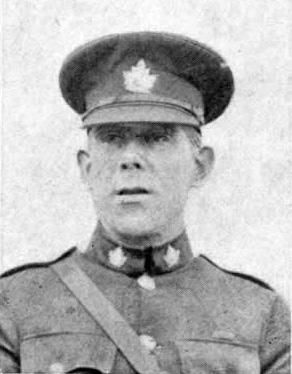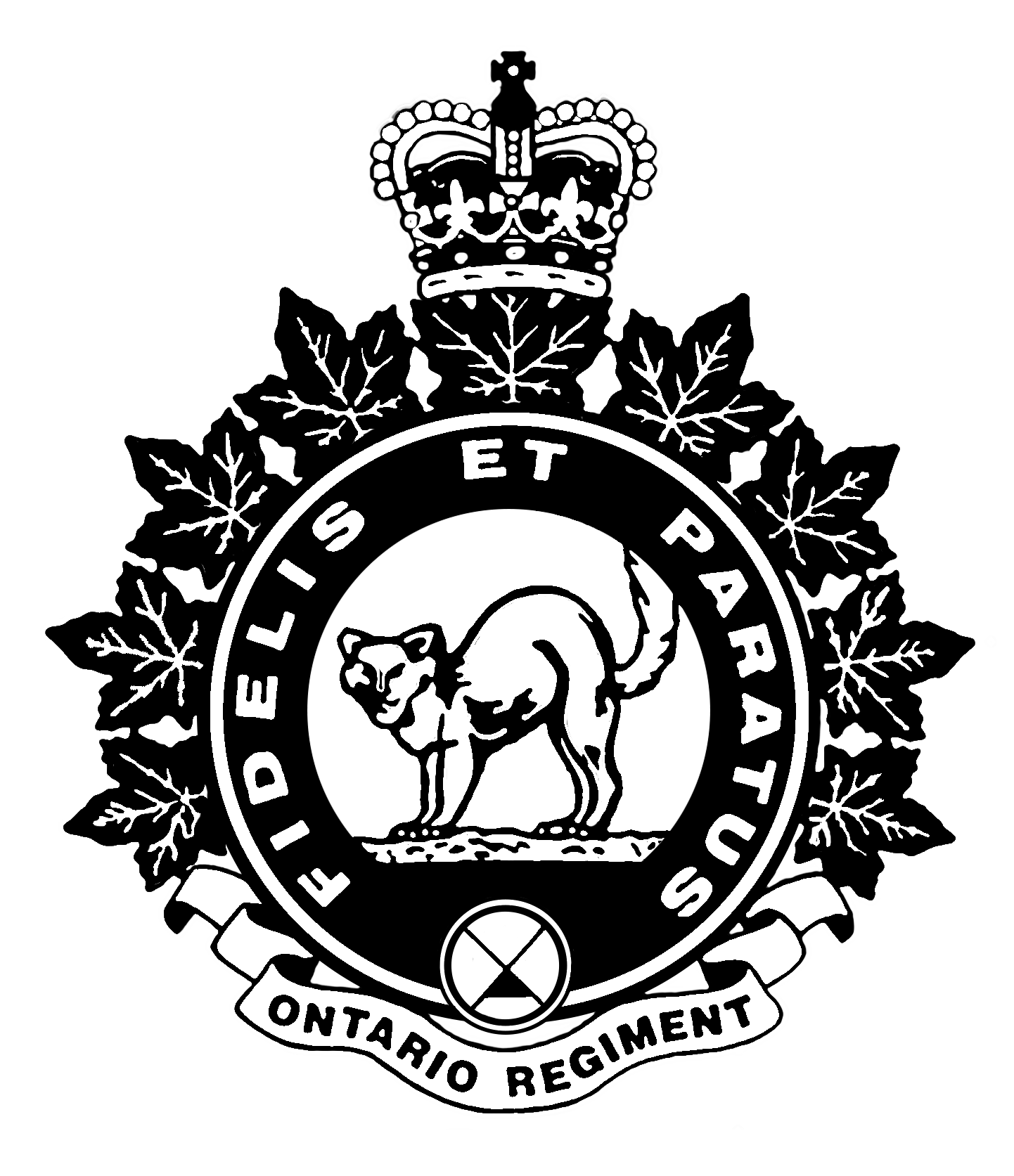This final article in the series documenting the Battalion Sergeants-Major of the 116th Battalion covers the final two BSMs – Warrant Officer Class II John Watters and Warrant Officer Class I Frederick Hindle.
John W. Watters
John Walker Watters was born October 13, 1894 in Falkirk, Scotland and immigrated to Canada in 1908.
He was living in Hamilton, ON and working as a barber when he joined the 120th Battalion on November 30, 1915. Watters had no previous military experience. The 120th Battalion sailed to the United Kingdom in August 1916 where the battalion was broken up for reinforcements. He transferred to the 2nd Reserve Battalion, where he stayed for a year.
Watters offered to revert to Private from acting Lance Sergeant in order to go to France. This allowed him to be taken on strength of the 116th Battalion on August 10, 1917. He was promoted to Corporal on November 2, 1917 and Sergeant on December 30, 1917.
Watters was awarded the Distinguished Conduct Medal and the Belgian Croix de Guerre. Both medals were for the same action on August 12-13, 1918, during the Battle of Amiens, in which he assumed command of his platoon and rushed an enemy machine gun position, killed the crew and captured the gun. This effort allowed his platoon to continue to their objective.
Watters was promoted to Warrant Officer Class II on Aug 31, 1918 and made acting Battalion Sergeant-Major. His time as BSM saw the 116th Battalion fight in the battles of the Drocourt-Queant Line and the Marcoing Line.
He relinquished his rank in October 1918 to transfer to England to obtain a commission. The end of the war in November would have eliminated the need to complete his officer training. He was discharged on February 21, 1919 with the rank of cadet.
Watters returned to civilian life and married Mary Helen Chase on June 19, 1923 in Wentworth, ON. They had at least two children, Margery and John Jr. His life is harder to document after this. He worked as an accountant in the 1920s and may have moved to the United States in the late 1930s or 1940s.
John Walker Watters died September, 1981 in Blackpool, Lancashire, UK (according an ancestry.ca entry).

Frederick H. Hindle
Frederick Harry Hindle was born on October 25, 1882 in Ilford, England. Hindle was the sixth and final Battalion Sergeant-Major of the 116th Battalion.
He arrived in Canada in 1905 and married Ellen Muir Bell on March 23, 1908. They had three children – Elizabeth, Alice and Robert, all prior the war.
Hindle was working as a contractor and living in Uxbridge at the outbreak of the First World War. Without any prior military experience he joined the 116th Battalion on November 17, 1915 in the early days of recruiting for the Battalion. He proceeded overseas to the United Kingdom with the Battalion in July 1916 as an Acting Sergeant and arrived in France in February 1917. In April he was confirmed as Sergeant.
Hindle was awarded the Distinguished Conduct Medal for his actions on August 27-28, 1918 during the fighting near Boiry. He took command of the platoon after the platoon officer became a casualty on August 27. On the next day Hindle commanded the platoon during an attack on a German strong-point by leading his men around the flank, over-powering a machine-gun position and then capturing two officers, thirty-five other ranks and two machine-guns.
In September 1918 he was promoted to Warrant Officer Class II and named as a Company Sergeant-Major. He was quickly promoted to Warrant Officer Class I and made Battalion Sergeant-Major on October 20. Hindle was the Battalion Sergeant-Major on Armistice Day and continued in that role until the 116th Battalion arrived back in Canada. He was discharged from the Canadian Expeditionary Force on March 28, 1919 in Toronto with the rest of the 116th Battalion.
Little is known of his life after the war. In the early post-war years he lived in Wybridge, just south of Midland, ON where he owned a farm. It appears that he moved to Toronto in 1929 and moved back to Simcoe County after the death of his wife in 1945.
Frederick Harry Hindle died on June 3, 1961 in Penetang, ON (according an ancestry.ca entry).
Full List of Battalion Sergeants-Major of the 116th Battalion
with links to previous biographies
| Nov 15, 1915 – July 24, 1916 | Sergeant-Major William Raynor Hole | (Acting BSM) |
| July 24, 1916 – Dec 17, 1917 | Warrant Officer Class I Frederick Charles Palmer | (Confirmed as BSM) |
| Dec 17, 1917 – April 8, 1918 | Warrant Officer Class II James Fenwick | (Acting BSM) |
| April 8, 1918 – Aug 31, 1918 | Warrant Officer Class I Robert Law Clark | (Confirmed as BSM) |
| Aug 31, 1918 – Oct 19, 1918 | Warrant Officer Class II John Walker Watters | (Acting BSM) |
| Oct 20, 1918 – March 28, 1919 | Warrant Officer Class I Frederick Harry Hindle | (Confirmed as BSM) |
Rod Henderson
Rod Henderson is the Regimental Historian of the Ontario Regiment. He served as a Sergeant in the Regiment and is the author of “Fidelis Et Paratus: The History of The Ontario Regiment RCAC”.

